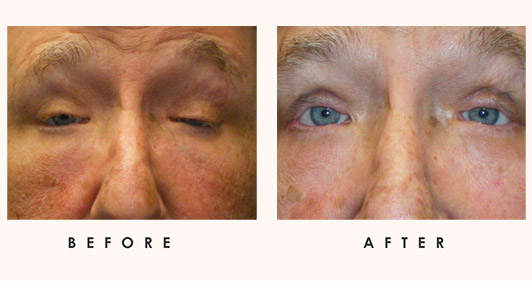Treatment of Lacrimal
Jump To
Traditional Surgical Treatments
The dacryocystorhinostomy (DCR) is the conventional approach to addressing chronic tearing problems and nasolacrimal duct obstructions. It has helped many patients with tear duct problems, caused by infection, accident/injury, birth defects, or environmental strain. DCRs have a robust success rate, around 90%. Recovery time is significant and there is a potential for excess bleeding. Incisional scars may develop due to invasive procedure. Note that DCRs may not be needed for partial obstructions.
Dacryocystorhinostomy (DCR)
The intent of the DCR is to restore normal tear flow through the tear ducts to the nose and reduce excessive tearing. This surgical procedure is met with decreased success in patients with prior nasal fractures, nasal mucosal disease, broad flat nasal bridges. It is also more difficult for patients who require repeat DCRs and who are children.
The procedure usually involves general anesthesia as bony excision is difficult for patients to tolerate when awake. Alternatively, monitored anesthesia care, a combination of local anesthesia with sedation and intravenous analgesia, may be employed. This allows the patient to remain awake but comfortable.
Create Ostium
During a DCR, Idaho Eyelid and Facial Plastic Surgery creates a new drainage pathway for tears by making a connection between the lacrimal sac and the nasal cavity via the bony opening (or the ostium). The surgical process helps define the posterior and inferior extent of bone removal around the bone covering the lacrimal sac.
Probe / Intubate
Both canaliculi are probed for opening. This allows access and placement of a tube in the nasolacrimal duct. This pathway is necessary for tear drainage.
Lacrimal Stents
Cdcr / Jones Tube / PG Tube
Sometimes during surgery, it is found that the tear duct obstruction is not repairable. It therefore becomes necessary to make an artificial tear duct so that tears can drain. Artificial tear ducts are made of Pyrex and known as a Jones tubes or Putterman-Gladstone (PG) tubes. These are highly specialized glass tubes designed for insertion into the nasolacrimal duct. After placement, scar tissue develops around the tube and holds it in place. That process allows for a new permanent tear duct.



